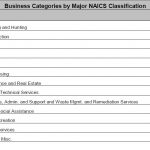What Drives Consumer Behavior
Purchasing habits fluctuate over time with every generation, but because of increased access to new technology and uncertainty due to world events and insecure futures, the consumer trends of generations have changed. In order for businesses to appeal to these consumers, it is important to understand what these buying habits are, how they have changed, and what techniques can be utilized to expand sales among five consumer segments. A recent article from American Demographics Advertising Age highlights these changing behaviors.
Read More...









